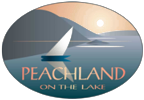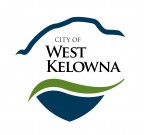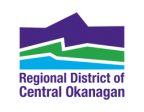Enjoy the outdoors this weekend and be safe around the Central Okanagan’s waterways
News Release No. 34 Central Okanagan, B.C. — With the forecast predicting warm and sunny weather throughout the Central Okanagan, it looks like it will be great weekend to get out and enjoy the outdoors. While the flooding situation around the region has stabilized, it is not over and residents and visitors are asked to exercise caution around waterways.
Flood protection measures continue to be deployed as needed and will remain in place until after the snowmelt has finished and water levels recede. Residents and visitors are reminded to stay off flood protection measures and away from active flood protection work sites. Jumping or walking on gabions or water dams is a public safety concern and could damage or undermine the devices, causing ruptures and significant water flows.
Okanagan Lake is safe to be enjoyed responsibly by locals and visitors alike. The lake level is above full pool and as a precaution, boaters are asked to practice low-wake activities and keep some safety measures in mind for an enjoyable weekend on the water.
Lake users should watch for floating debris as a significant amount has flowed downstream into the lake. Low-wake activities are encouraged during high water levels to minimize the erosion of vulnerable shoreline and the damage to property.
Below are some tips for boaters to ensure their safety and minimize damage to the foreshore.
- Ideally, wake height should be no more than 30 centimetres (1 foot).
- Large and heavier boats create damaging waves even at low speeds. Extra caution is needed when cruising the lake. Keep in the centre whenever possible.
- Small and light boats should remain 300 metres from the shoreline whenever possible or travel in the centre of the lake when approaching vulnerable shorelines. Travel under 10 km/h within 300 metres of the shoreline.
- When operating at no-wake speed, trim the drive or outboard to allow the boat to proceed with smallest wake possible.
- Watch for debris and submerged logs.
- Sun worshippers are encouraged to try wake-free options to enjoy Central Okanagan lakes or the many recreation and leisure activities available here. Stand-up paddleboards, kayaks and canoes are perfect for exploring the lakes and beaches. Hundreds of parks and trails offer great options for picnics or exploring nature.
Okanagan Lake currently sits at 342.64 metres and normal high-water level is 342.48 metres. This is expected to rise to 342.8 metres, which is 46 centimetres below the 2017 high. The situation can still change however, especially if we get a major rain event or high heat speeds up the high elevation snow melt.
Residents can monitor lake levels at wateroffice.ec.gc.ca and those near floodplains are asked to continue to prepare for high water. All measures used last year to protect property should be implemented this year.
Those along the waterfront are urged to take precautions, including securing their docks and making sure boat anchor lines are long enough so they don’t snap if water continues to rise.
Sand and sandbags locations are available at www.cordemergency.ca/map
High levels of debris may be noted along creeks in the Central Okanagan. Central Okanagan Regional Emergency operations and BC Wildfire Services are proactively monitoring and clearing areas where high volume of debris may accumulate along creeks.
Debris washed up on beaches should be left there for the time being. The logs and other wood material will help limit erosion caused by wave action. When the flood risk has passed, officials will provide notification of how the beach debris will be removed.
For up-to-date information, including active evacuation alerts and orders across the Central Okanagan, as well as flood-preparedness resources, visit cordemergency.ca.
For municipal information such as water quality advisories, visit their websites:







